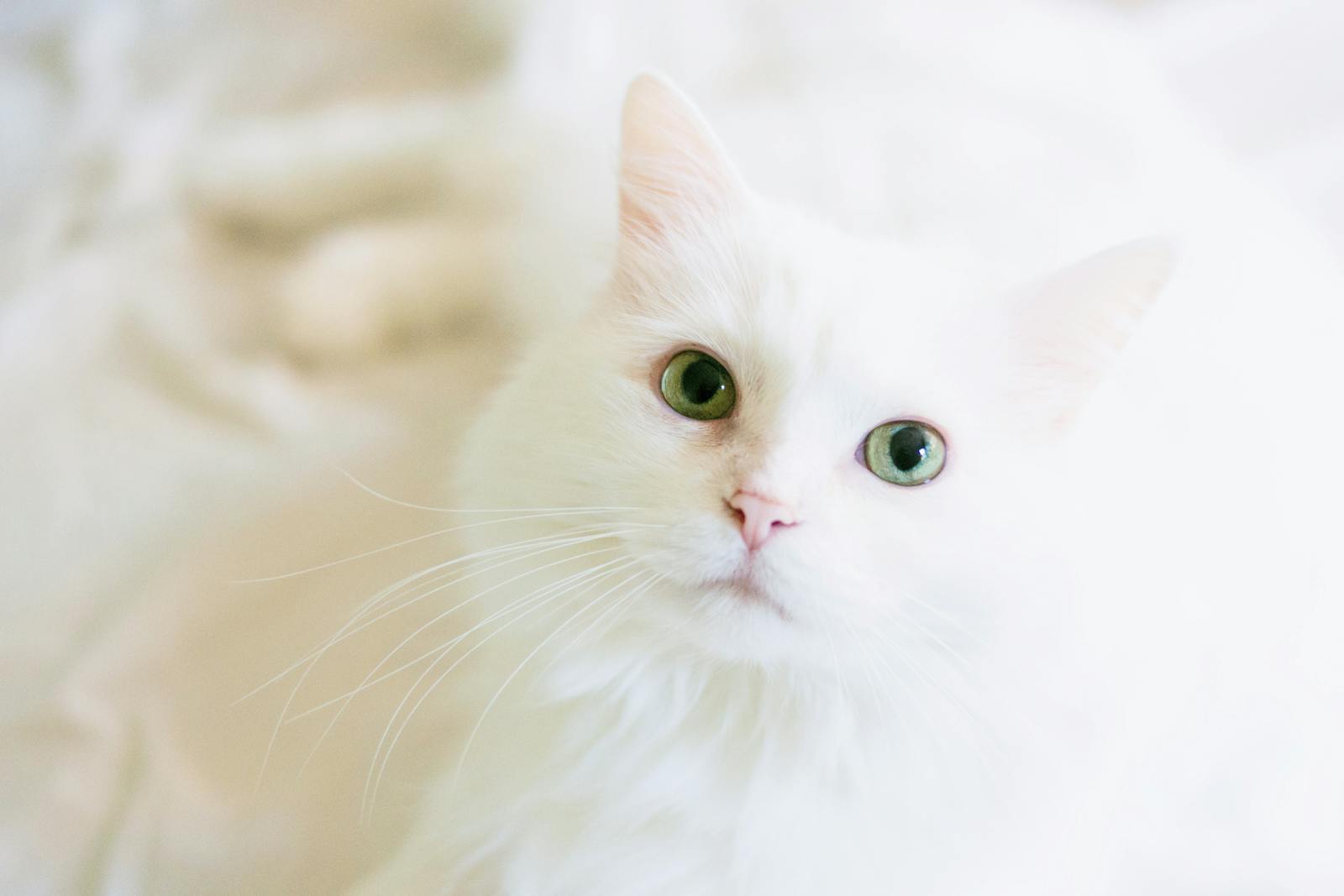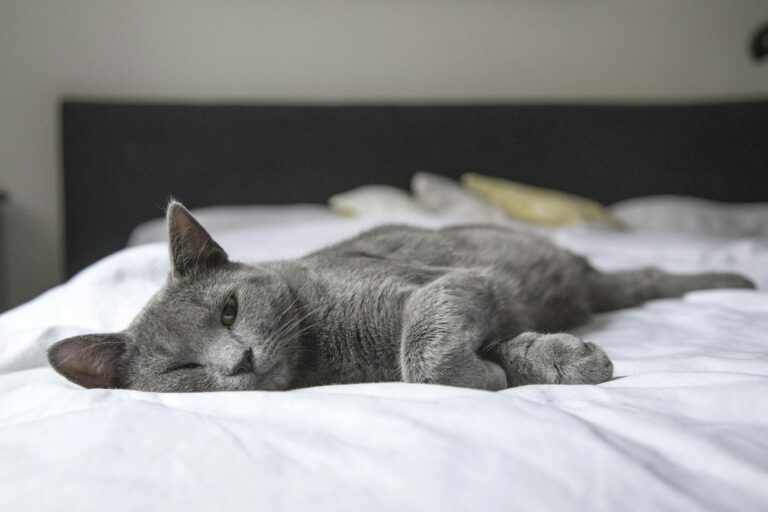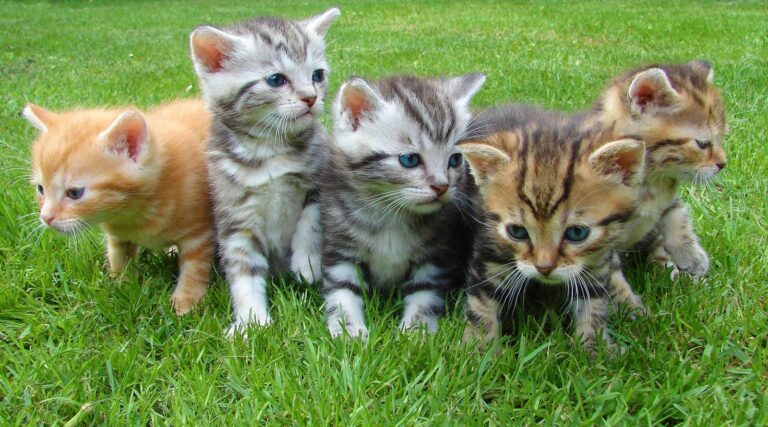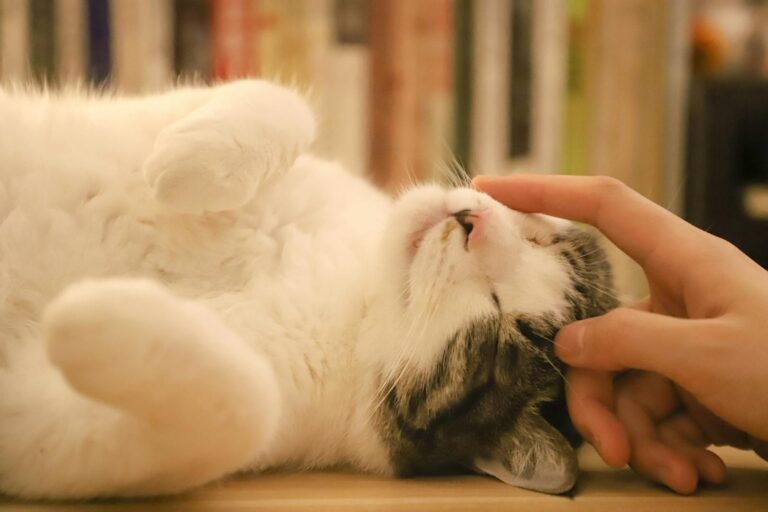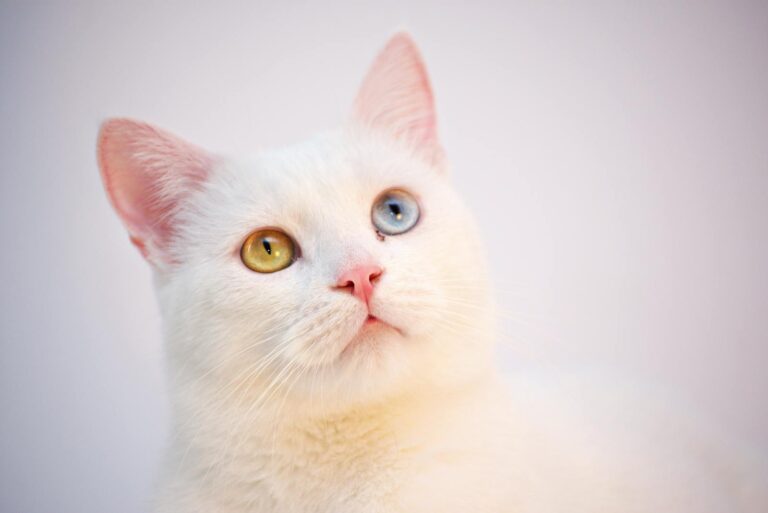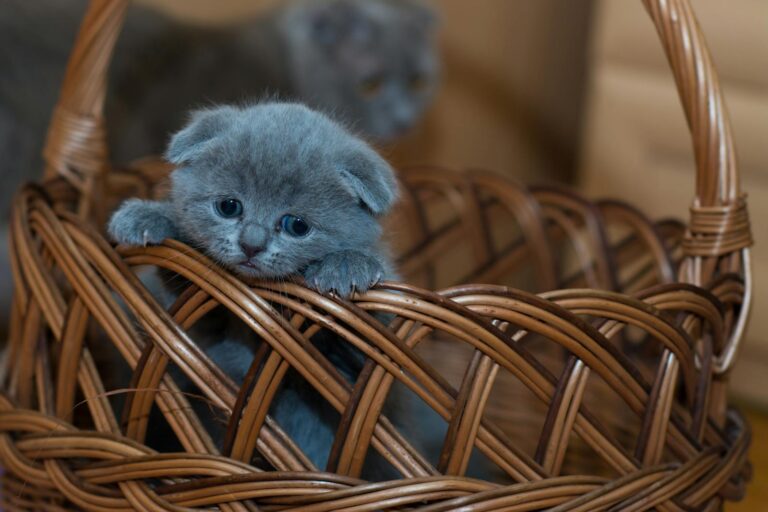Understanding Hairballs in Cats – Unraveling Causes and Solutions
Hairballs in Cats: Causes can often be a puzzling subject for pet owners. These unpleasant clumps of fur are common among our feline friends, leaving many cat parents searching for answers. Understanding what causes hairballs, how to recognize their symptoms, and exploring effective remedies and preventative measures can make all the difference in ensuring your cat’s health and comfort.
Understanding Feline Hairballs: An Overview
For cat owners, hairballs seem to be a rite of passage. You may have found yourself cleaning up an unsightly mess on the carpet or hearing that ominous hacking cough from your beloved kitty. While hairballs are a typical occurrence, understanding their formation and impact on your pet’s well-being is critical.
What Are Hairballs?
Hairballs, also known as trichobezoars, are formed when cats groom themselves. As they lick their fur, some loose hair inevitably ends up in their stomachs. Normally, this hair would pass through the digestive system without issue. However, too much accumulated hair can coalesce into a tangible mass, leading to the hairball that is eventually expelled.
Cats are particularly prone to hairballs due to their grooming habits. They use their rough tongues to remove loose hairs and dirt, which makes them more susceptible to swallowing hair. This grooming is instinctual; it’s how they keep themselves clean and maintain their appearance.
Why Do Some Cats Have More Hairballs than Others?
The frequency of hairballs varies significantly among cats. Factors influencing this include the cat’s breed, age, health condition, and grooming habits. For instance, long-haired breeds like Persians and Maine Coons are more likely to develop hairballs due to their longer fur and increased grooming needs.
Older cats might experience more occurrences of hairballs as their digestive systems slow down with age, making it difficult for the body to expel the ingested hair efficiently. Moreover, underlying health issues, such as allergies or skin conditions, can lead to excessive grooming, thus increasing the likelihood of hairball formation.
The Impact of Hairballs on Cat Health
While hairballs are generally not dangerous, they can sometimes lead to complications. If a cat cannot successfully expel a hairball, it could cause obstruction in the digestive tract. Signs of distress may include vomiting, lethargy, loss of appetite, and constipation. Hence, it’s crucial for cat owners to stay vigilant and monitor their pets’ behaviors regarding hairballs.
Understanding these aspects of hairballs in cats is fundamental to grasping their causes, recognizing potential issues, and taking proactive steps to mitigate any negative impacts on your furry companion’s quality of life.
Causes of Hairball Formation in Cats
Diving deeper into the causes of hairball formation in cats, we can better understand how to address this phenomenon effectively. Multiple factors contribute to the buildup of hairballs, and identifying these can enhance our strategies for management.
Grooming Behavior
Cats are meticulous groomers, spending significant portions of their day preening. This natural behavior promotes hygiene but also leads to the ingestion of stray hair. The more a cat grooms itself, the higher the probability that hair will accumulate in its stomach, forming a hairball.
Some cats may groom excessively due to stress or boredom. This psychological factor can exacerbate the hairball problem, leading to increased discomfort and more frequent hairball formations.
Coat Type and Shedding
Coat type plays a crucial role in hairball formation. Long-haired breeds typically shed more fur than short-haired ones, resulting in higher instances of hairballs. Seasonal shedding can also contribute to this issue, especially during spring and fall when cats naturally lose their winter or summer coats.
Regularly brushing your cat can help control shedding and reduce the amount of hair your cat ingests while grooming. This not only minimizes hairballs but also fosters a bond between you and your feline friend.
Dietary Factors
A cat’s diet influences its grooming habits and overall health, affecting hairball formation. Low-quality food lacking essential nutrients can lead to poor coat health, resulting in increased shedding. Foods rich in Omega-3 and Omega-6 fatty acids can improve coat quality and potentially reduce shedding.
Moreover, providing a high-fiber diet can facilitate smoother digestion and help hair pass through the system more efficiently. Cat food specially formulated for hairball control is widely available and can be beneficial if your cat is prone to frequent hairballs.
Health Conditions
Certain underlying health issues can increase a cat’s tendency to develop hairballs. Conditions like allergies or skin irritations can cause excessive scratching and licking, which leads to more hair being ingested. Gastrointestinal disorders can also affect how a cat processes hair, making it more susceptible to hairballs.
If you suspect that your cat’s hairball formation is linked to a health issue, consulting with a veterinarian is vital. A professional can provide a thorough examination and recommend appropriate treatment options tailored to your cat’s specific needs.
In summary, the causes of hairball formation in cats are multifaceted—spanning grooming behavior, coat type, dietary factors, and health conditions. Recognizing these elements is key to managing hairballs effectively.
Recognizing the Signs and Symptoms of Hairballs
As a responsible cat owner, being able to spot the signs and symptoms of hairballs is crucial. Early recognition can help prevent more severe complications and ensure your feline friend stays healthy and happy.
Common Symptoms of Hairballs
The most recognizable symptom of hairballs is the act of coughing or retching. Cats may exhibit behavior such as hacking or gagging as they attempt to expel a hairball. This sound can be alarming, but it’s essential to understand that it’s a natural part of the hairball process.
Besides vocalizations, watch for changes in behavior during episodes of hairball formation. Your cat may exhibit signs of discomfort, such as restlessness, pacing, or excessive grooming. They might also appear less active or more withdrawn than usual.
Vomiting Hairballs
If your cat successfully expels a hairball, it can appear as a cylindrical mass of fur, often mixed with saliva. It’s important to note that while occasional hairball vomiting is normal, persistent vomiting can indicate a more serious issue.
If your cat vomits multiple hairballs in a short period, or if there are other concerning signs such as blood in the vomit, lethargy, or loss of appetite, it’s imperative to seek veterinary assistance immediately.
Changes in Appetite and Lethargy
An increased incidence of hairballs can signify dietary deficiencies or gastrointestinal problems. If your cat shows a sudden decrease in appetite or abnormal lethargy, accompanied by hairball vomiting, it warrants immediate attention. These changes could indicate that your cat is experiencing discomfort or is unable to properly digest food due to hair obstruction.
Constipation and Behavioral Changes
In some cases, hairballs can lead to constipation, characterized by infrequent bowel movements or straining. A cat that is having difficulty passing stool may show signs of discomfort, such as meowing excessively or resting uncomfortably. Additionally, changes in your cat’s mood—such as increased anxiety or irritability—can signal distress related to hairball issues.
Recognizing these signs and symptoms early can help cat owners take swift action to manage their pet’s hairballs in cats effectively. Maintaining an open line of communication with your veterinarian and addressing any concerns promptly will enhance your cat’s overall well-being.
Effective Remedies for Eliminating Hairballs
When it comes to dealing with hairballs, various remedies can help alleviate the issue. Understanding these options enables cat owners to choose the best approach for their pets.
Dietary Solutions
One of the most effective ways to combat hairballs is through dietary changes. Choosing a nutritious, high-fiber cat food designed specifically for hairball control can make a significant difference. These foods often contain added ingredients like beet pulp and psyllium, which help move hair through the digestive system.
Additionally, incorporating wet food into your cat’s diet can help increase hydration. Well-hydrated cats tend to have smoother digestion, reducing the chances of hairballs getting lodged in their stomachs.
Regular Grooming and Brushing
Regular grooming is essential for minimizing shedding and preventing hairballs. By brushing your cat’s fur consistently, you can help remove loose hair before it gets swallowed. Long-haired cats benefit tremendously from daily brushing, while short-haired breeds may require grooming a few times a week.
Using a high-quality brush suited for your cat’s fur type can make this process enjoyable for both you and your pet. Not only does grooming help reduce hairballs, but it also strengthens the bond between you and your feline friend.
Hairball Remedies and Treatments
Several over-the-counter products are available to help manage hairballs. These typically include lubricants or gels that work to soften hairballs, making them easier for your cat to pass. Some products may also contain natural ingredients that promote healthy digestion and coat maintenance.
Before introducing any new product, consult with your veterinarian to determine the best solution for your cat’s specific needs. Avoid using human medications, as they can be harmful to your pet.
When to Seek Veterinary Help
If your cat suffers from recurrent hairballs despite trying various remedies, it’s time to consult a vet. Persistent hairballs may indicate gastrointestinal blockages or underlying health issues that require professional intervention. Your vet can conduct tests and recommend suitable treatments tailored to your cat’s situation.
In summary, effective remedies for eliminating hairballs involve a combination of dietary solutions, regular grooming, topical treatments, and professional guidance when necessary. By implementing these strategies, you can help your cat manage hairballs more effectively and lead a healthier, happier life.
Preventative Measures to Reduce Hairball Incidence
Preventing hairballs in cats is ultimately about understanding their unique needs and behaviors. Proactive measures can drastically minimize hairball formation and enhance your pet’s well-being.
Adjusting Grooming Routines
As previously discussed, regular grooming is crucial in controlling shedding. Establishing a consistent grooming schedule can help limit the amount of hair your cat ingests. In addition to standard brushes, consider investing in grooming tools like de-shedding combs or grooming gloves, which provide a fun way to bond with your pet while keeping their coat healthy.
Providing Specialized Diets
Feeding your cat a specialized diet geared towards hairball prevention is another effective strategy. Look for comprehensive formulas that comprise high-quality ingredients, with added fiber content to support healthy digestion.
Incorporating treats specifically designed to reduce hairballs can also work wonders. Many brands offer treats fortified with fibers that aid in the smooth passage of hair through the gut.
Hydration and Environmental Enrichment
Ensuring your cat has access to fresh water at all times cannot be overstated. Proper hydration is essential for overall health and can help prevent constipation associated with hairballs. Consider using a pet water fountain to encourage drinking, as many cats prefer running water.
Moreover, enhancing your cat’s environment with toys and enrichment activities can distract them from excessive grooming. Providing scratching posts, puzzle feeders, and interactive toys can keep your cat engaged and mentally stimulated, reducing stress-related grooming behaviors.
Monitoring Health and Behavioral Changes
Maintaining regular veterinary check-ups can help catch potential health issues before they escalate. During these visits, discuss your cat’s grooming habits, diet, and overall well-being with your vet. Address any behavioral changes or concerns to ensure your cat receives appropriate care.
By focusing on preventative measures, cat owners can significantly reduce hairball incidents and foster a healthier living environment for their pets.
Choosing the Right Hairball Management Strategy for Your Cat
With various factors influencing the development of hairballs, selecting the right management strategy requires careful consideration of your cat’s individual needs. Here are some tailored approaches to ensure your pet stays comfortable and healthy.
Assessing Your Cat’s Unique Needs
Every cat is different, and what works for one may not work for another. Assess your cat’s grooming habits, coat type, diet, and overall health before deciding on the best hairball management strategy.
If your cat is a long-haired breed, prioritize regular grooming and look for specialized diets designed for hairball prevention. Conversely, short-haired cats may require less frequent grooming but still benefit from high-fiber diets to aid in digestion.
Tailoring Your Approach
Once you’ve assessed your cat’s needs, tailor your management approach accordingly. This may involve a combination of dietary adjustments, increased grooming, and introducing hairball control products.
Consider setting reminders for regular grooming sessions or meal planning to incorporate specialized cat food. Keeping a close eye on your cat’s behavior and symptoms will help you adapt your strategy as needed.
Consulting Professionals
Don’t hesitate to reach out to your veterinarian regarding any concerns you have about hairballs. Professionals can provide valuable insights and recommend personalized strategies based on your cat’s specific health history and lifestyle.
Your veterinarian can also help identify potential underlying health issues contributing to hairball formation. Open communication with your vet will empower you to make informed decisions regarding your pet’s care.
Staying Informed
Lastly, staying informed about cat care trends and practices is essential. Continuous learning about nutrition, grooming techniques, and behavior management ensures you have the tools and knowledge necessary to manage hairballs effectively.
Engaging with fellow cat owners, reading expert articles, and attending workshops can broaden your understanding of feline health and well-being. An informed cat owner is a confident cat owner!
By carefully evaluating your cat’s individual needs, tailoring your approach, consulting professionals, and staying informed, you can choose the right hairball management strategy that keeps your furry friend happy and healthy.
Conclusion
In conclusion, understanding hairballs in cats: causes and management strategies is vital for ensuring your feline friend’s health and comfort. From recognizing grooming habits and dietary influences to implementing effective remedies and preventative measures, proactive cat owners can significantly mitigate the incidence of hairballs. Staying attentive to your cat’s needs and maintaining open communication with your veterinarian will further enhance your ability to keep your pet happy, healthy, and free from discomfort caused by hairballs.

